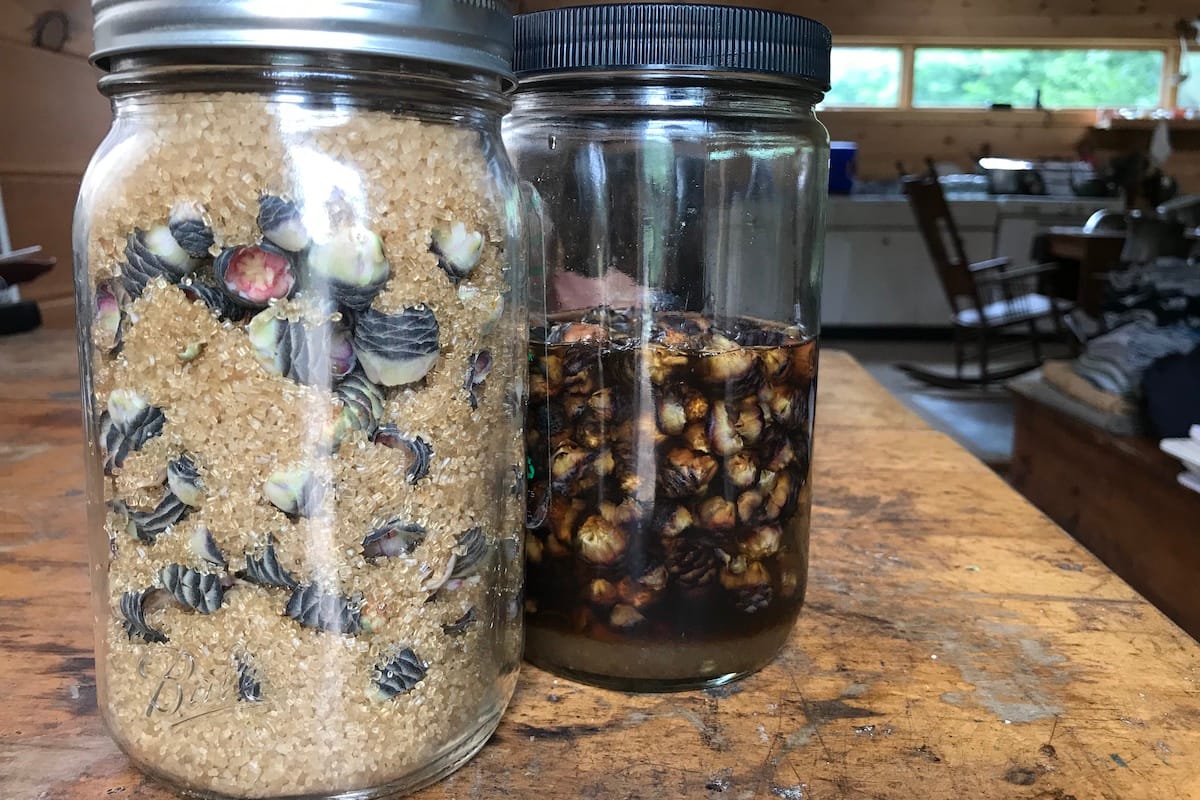Discovering the Delights of Mugolio
Mugolio, a syrup crafted from the essence of young pine cones and other conifer treasures, offers a unique taste of the wild. This intriguing concoction, steeped in the traditions of the Italian Dolomites, has captivated palates for generations. Join us as we delve into the history, versatility, and captivating flavors of mugolio.
From the Dolomites to Your Table: The Story of Mugolio
The origins of mugolio can be traced to the Dolomite Mountains of Italy, where foraging for wild ingredients is a deeply rooted practice. Resourceful locals discovered a way to transform young, green pine cones (and other conifer materials) into a remarkable syrup. This involved macerating the cones with sugar, allowing time and natural processes to work their magic, and ultimately yielding a dark, fragrant syrup that embodies the essence of the forest. If you are interested to know about Mentha then you should read about the mentha varieties which will provide you varietal details of Mentha. And if you are in a mood of humming a song then read about lyrics for wayfaring stranger to get the right lyrics and sing it loud.
Crafting Mugolio: A Step-by-Step Guide
Creating your own mugolio is a rewarding experience that connects you to nature’s bounty. Here’s a simple guide to get you started:
Foraging for Cones: Venture out in spring or early summer to gather young, green pine cones. Practice responsible foraging, ensuring you only take what the environment can sustainably offer.
The Sweetening Process: Combine your foraged cones with sugar in a clean container. The precise ratio of cones to sugar can vary based on the recipe and your desired sweetness.
Maceration Magic: Patience is key during this stage. Allow the mixture to sit for an extended period, often several weeks or even months. This maceration process allows the sugar to extract the rich flavors from the cones, creating the base for your syrup.
Fermentation for Flavor (Optional): Some mugolio makers introduce a fermentation step by adding water to the cone and sugar mixture. This process, similar to winemaking, can add depth and complexity to the final flavor profile.
Straining and Bottling: Once maceration (and optional fermentation) is complete, strain the mixture to remove the solids. The resulting liquid is your mugolio, ready to be bottled and enjoyed.
A Symphony of Flavors: Exploring Conifer Variations
While pine cones are the classic choice for mugolio, the beauty of this syrup lies in its versatility. Other conifer treasures, such as spruce tips, fir cones, hemlock, and even juniper, can be used, each imparting its own unique personality to the final product. Some might contribute earthy or resinous notes, while others offer a hint of citrus or floral sweetness. This allows for a truly personalized flavor experience, akin to composing your own aromatic symphony.
Mugolio: Culinary Uses and Potential Benefits
Mugolio is truly a culinary chameleon, adapting to both sweet and savory applications. Drizzle it over ice cream or pancakes for a taste of the wild, or incorporate it into cocktails for a unique twist. Its versatility extends to cheese boards, marinades, and even savory sauces, adding depth and complexity to a wide range of dishes.
Some traditional practices suggest potential health benefits associated with mugolio, including immune-boosting and mild antibiotic-like properties. However, it’s essential to note that scientific research in this area is limited, and these claims should not be taken as medical advice. Ongoing studies may shed more light on the potential health benefits of mugolio in the future.
Responsible Foraging: Preserving Nature’s Gifts
When foraging for any wild ingredient, including pine cones for mugolio, responsible practices are paramount. Accurate identification of the species is essential, as some conifers are toxic. Harvest only what you need, ensuring the ecosystem remains healthy and able to regenerate. Sustainable foraging ensures these natural treasures will be available for generations to come.
The Mugolio Renaissance: A Modern Twist on Tradition
Chefs and mixologists are rediscovering mugolio, incorporating this ancient syrup into innovative dishes and cocktails. From savory sauces to creative cocktails, mugolio is inspiring a new wave of culinary exploration.
What Does Mugolio Taste Like?
Imagine the invigorating scent of a pine forest after a gentle rain. That fresh, earthy aroma forms the core of mugolio’s flavor profile. It’s a nuanced piney note, reminiscent of caramelized pine resin, with a subtle sweetness akin to maple syrup. Hints of rosemary and other wild herbs add complexity, while a touch of treacle provides a balancing bitterness.
The precise flavor of mugolio can vary based on several factors, including the species of pine cone used, the time of harvest, and even environmental factors like soil composition and sunlight exposure. Some experts suggest that the specific types of yeast present on different conifer cones might also influence the final flavor. Ongoing research is exploring these nuances, promising a deeper understanding of mugolio’s complex flavor profile in the future.
Beyond Mugo Pine: Which Conifers are Safe for Mugolio?
While traditional mugolio is made from the Mugo pine (Pinus mugo), other conifers can also be used, offering a diverse range of flavor possibilities. Spruce, fir, and hemlock are safe options, each contributing unique characteristics to the syrup. However, it’s crucial to avoid toxic pines such as lodgepole, Norfolk, ponderosa, and yew. Accurate identification is paramount for safe foraging.
The process of making mugolio typically involves layering young, green cones with sugar in a jar and allowing them to macerate for several weeks or even months. This process extracts the essence of the cones and can involve natural fermentation. Variations in sugar type and concentration, as well as the addition of water, can further influence the final flavor. Experimentation is encouraged, but always prioritize safety and responsible foraging practices.
By understanding the nuances of flavor, foraging practices, and culinary applications, you can unlock the full potential of mugolio and embark on a truly unique culinary adventure.
- Rosie the Riveter Dress: A Comprehensive Guide to Achieving the Iconic Look (DIY & Ready-Made) - November 19, 2024
- Sadaharu Oh: The Legendary Home Run King of Japanese Baseball - November 19, 2024
- Joachim Peiper: The Waffen-SS Commander, Malmedy, and a Legacy of War - November 19, 2024














